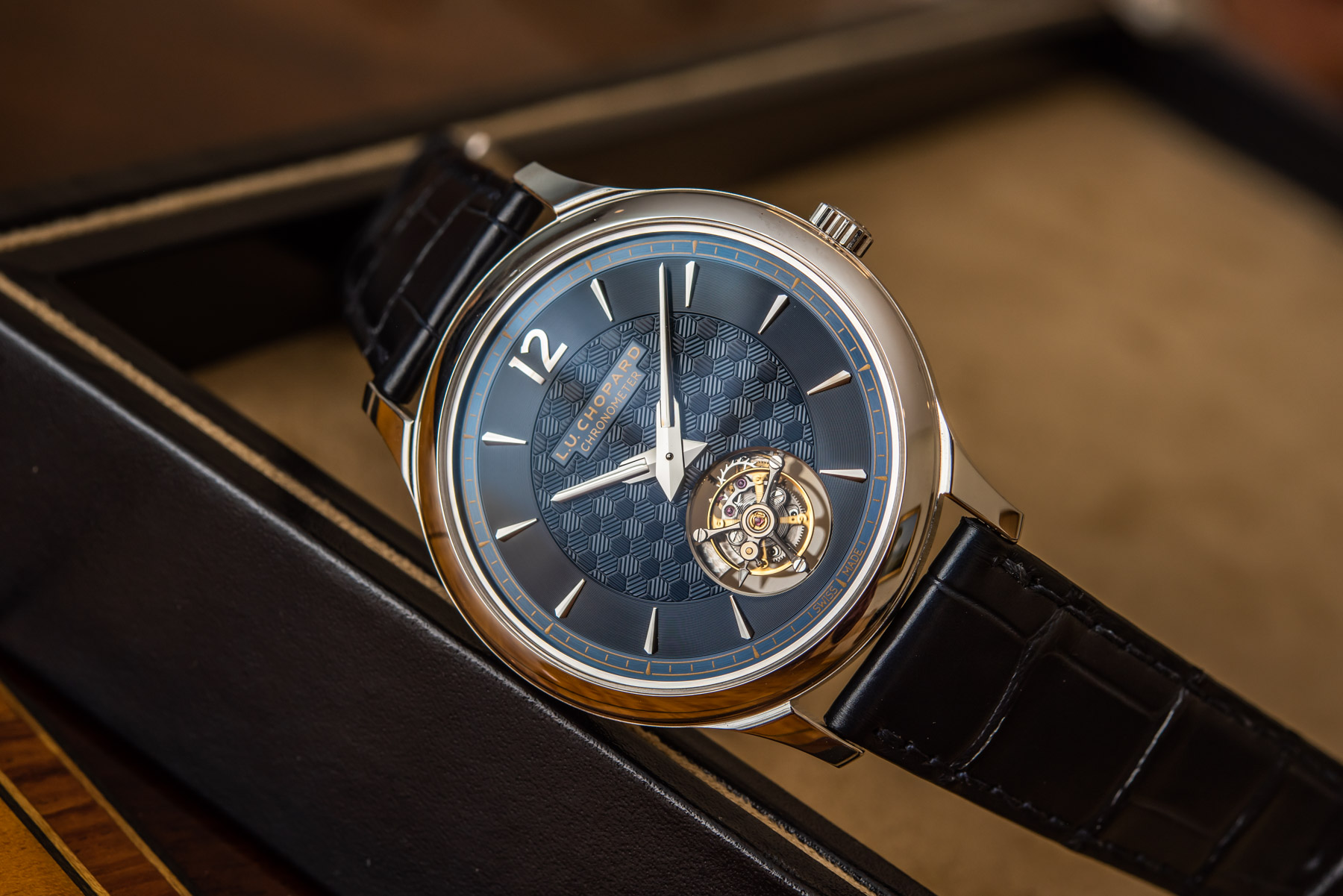
In 2019, Chopard debuted the L.U.C. Flying T Twin watch, which housed the calibre 96.24-L, the brand’s first automatic flying tourbillon. Now, we see a follow-up to the original, this time in a white-gold case with solid gold dial done in blue with honeycomb guilloché. Not just an aesthetic triumph, the Flying T Twin features an ultra-thin stop-seconds tourbillon and a movement that is both COSC-certified and bears the Geneva Seal. Limited to 50 pieces, this watch is a testament to the Scheufele family’s investment in Chopard’s L.U.C division.
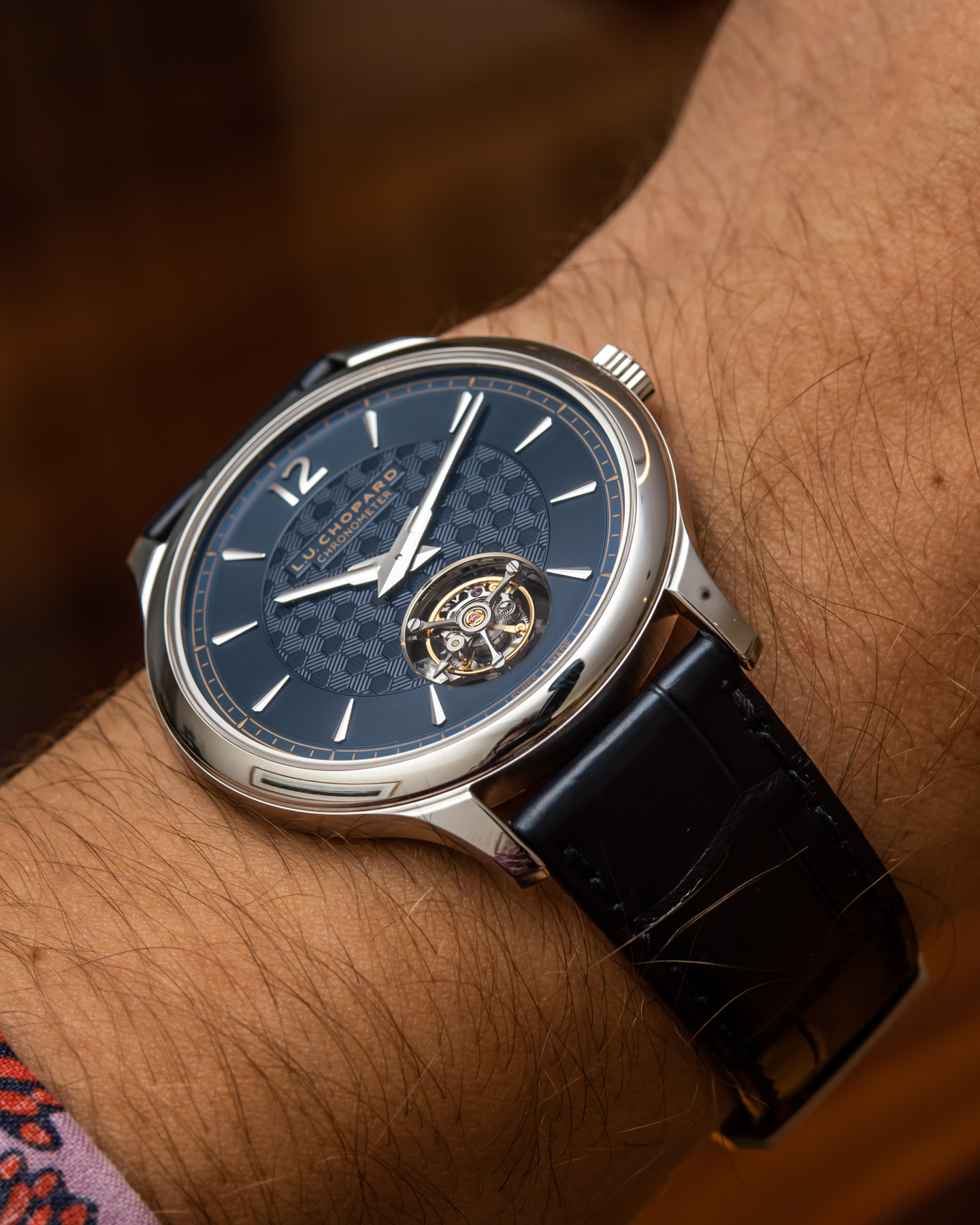
For anyone unfamiliar, L.U.C is the initials of founder Louis-Ulysse Chopard and is the designation given to watches produced at the brand’s high-end manufacture in Fleurier that opened in 1996. While I admire the more recent releases, I personally have a deep love for some of the earliest L.U.C pieces Chopard released. I would place the first two Chopard L.U.C calibers (the 1.96 and 1.98 Quattro) amongst offerings from the finest watchmakers out there. So, while I find this new Flying T Twin to be well-sized for the contemporary buyer at 40mm, I can’t help but be even more drawn to the limited-edition model Chopard did with Revolution in the 36.5mm case. Why?
Because the 96.24-L is based on, and is the same size as, the first L.U.C Calibre 1.96, which measures 27.4mm-wide and 3.3mm-thick. My personal taste will always prioritize a movement that fits snugly in its case rather than sizing up the case to fit consumer tastes. But…Chopard is a business, and I understand why they would choose not to limit a six-figure offering to a 36.5mm case in 2021.
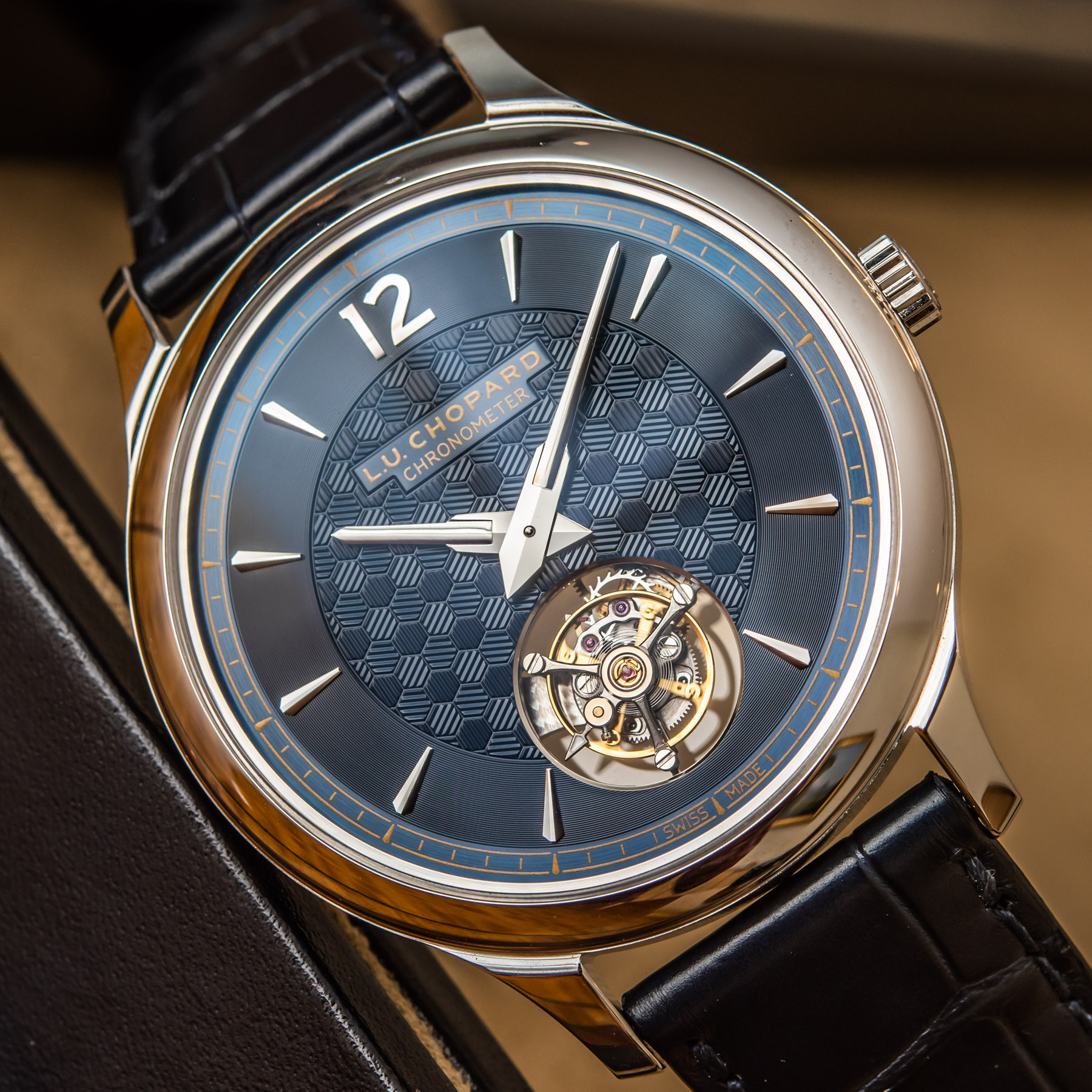
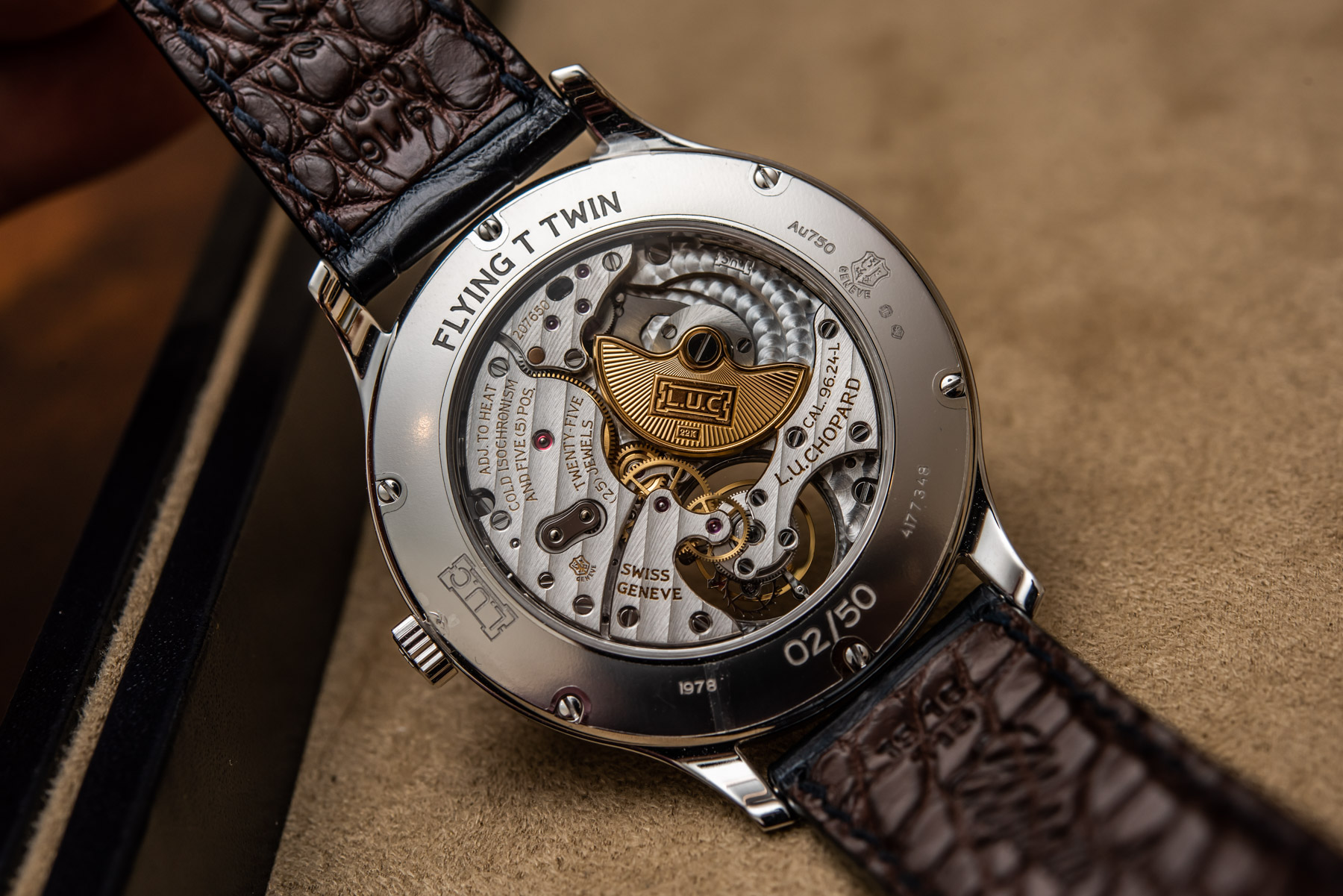
Now back to the watch we’re actually discussing.
Released in 2019, the L.U.C Calibre 96.24-L was Chopard’s first automatic flying tourbillon. The “flying” refers to the fact that there is no upper bridge supporting the tourbillon in place (such as you’d find in a manual-wind tourbillon like this one) and, due to it being a one-minute tourbillon, it serves as a seconds counter as well. It is also COSC-certified (not common for tourbillons) and is a stop-seconds tourbillon, which is not something I’ve seen other than a handful of times by brands like A. Lange & Söhne, Gronefeld, Moritz Grossmann, and one or two others. The lion’s share of tourbillons out there will not stop when you pull out the crown to set the time, sacrificing the kind of accuracy one would have with any watch with a hacking seconds function.
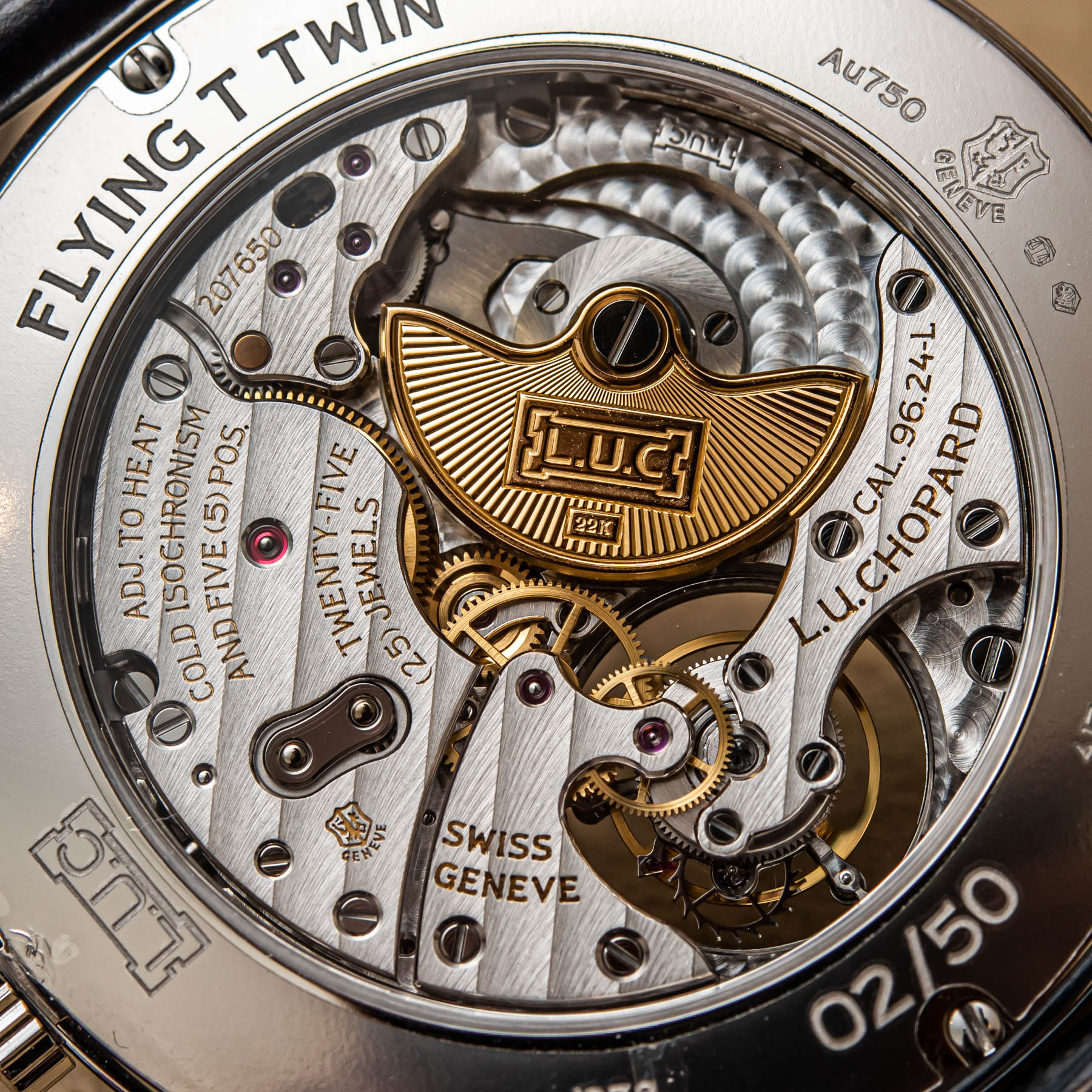
The 96.24-L bears the Geneva Seal, so we know that the finishing on the movement is excellent. The “twin” part of the T Twin designation refers to the fact that this movement has two stacked barrels, thanks to Chopard’s patented Twin technology. This allows the modestly sized movement to achieve an impressive 65-hour power reserve. Just like the Michel Parmigiani-designed original L.U.C Calibre 1.96, the 96.24-L has that beautifully finished 22k-gold micro-rotor serving as the visual centerpiece on the caseback.
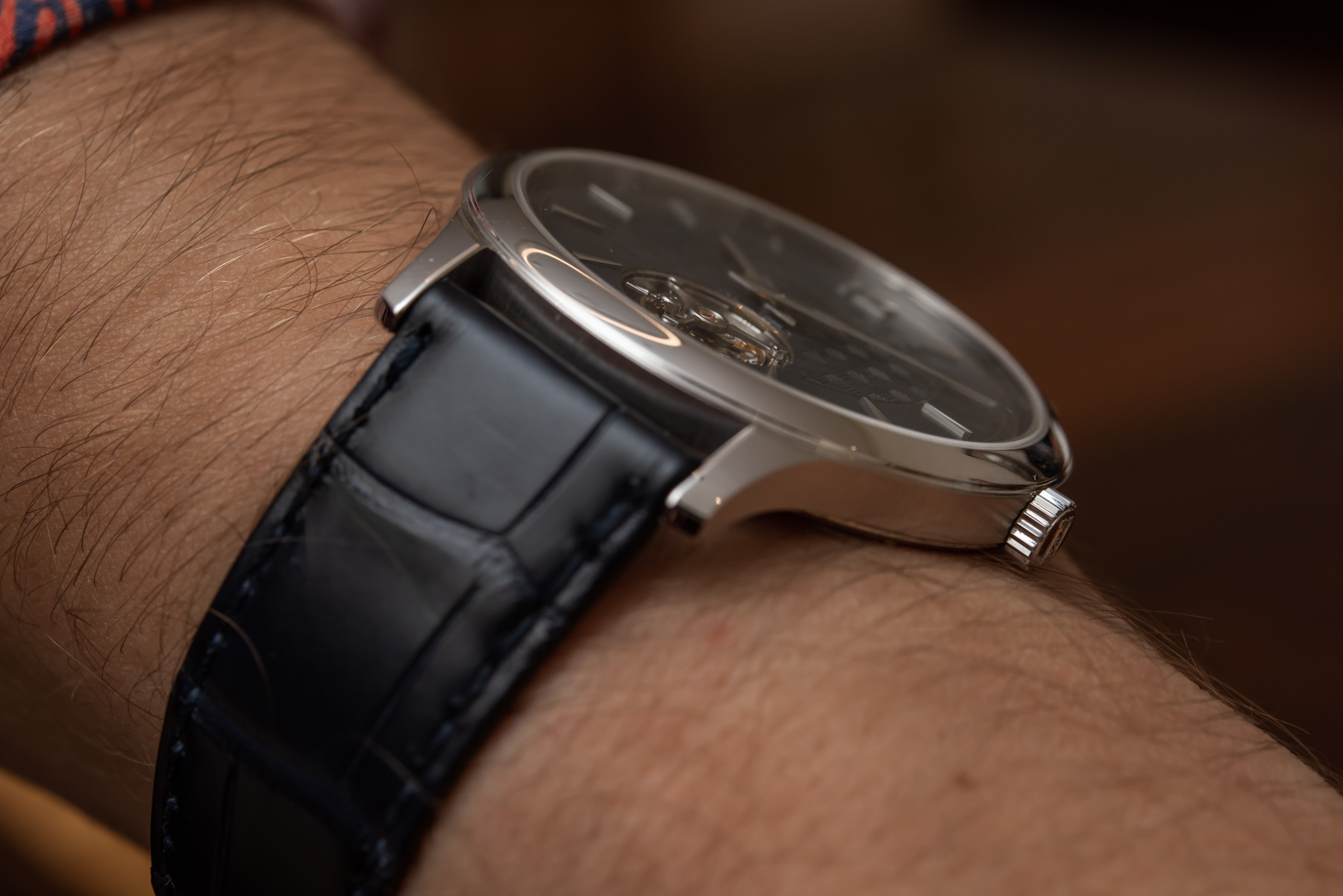
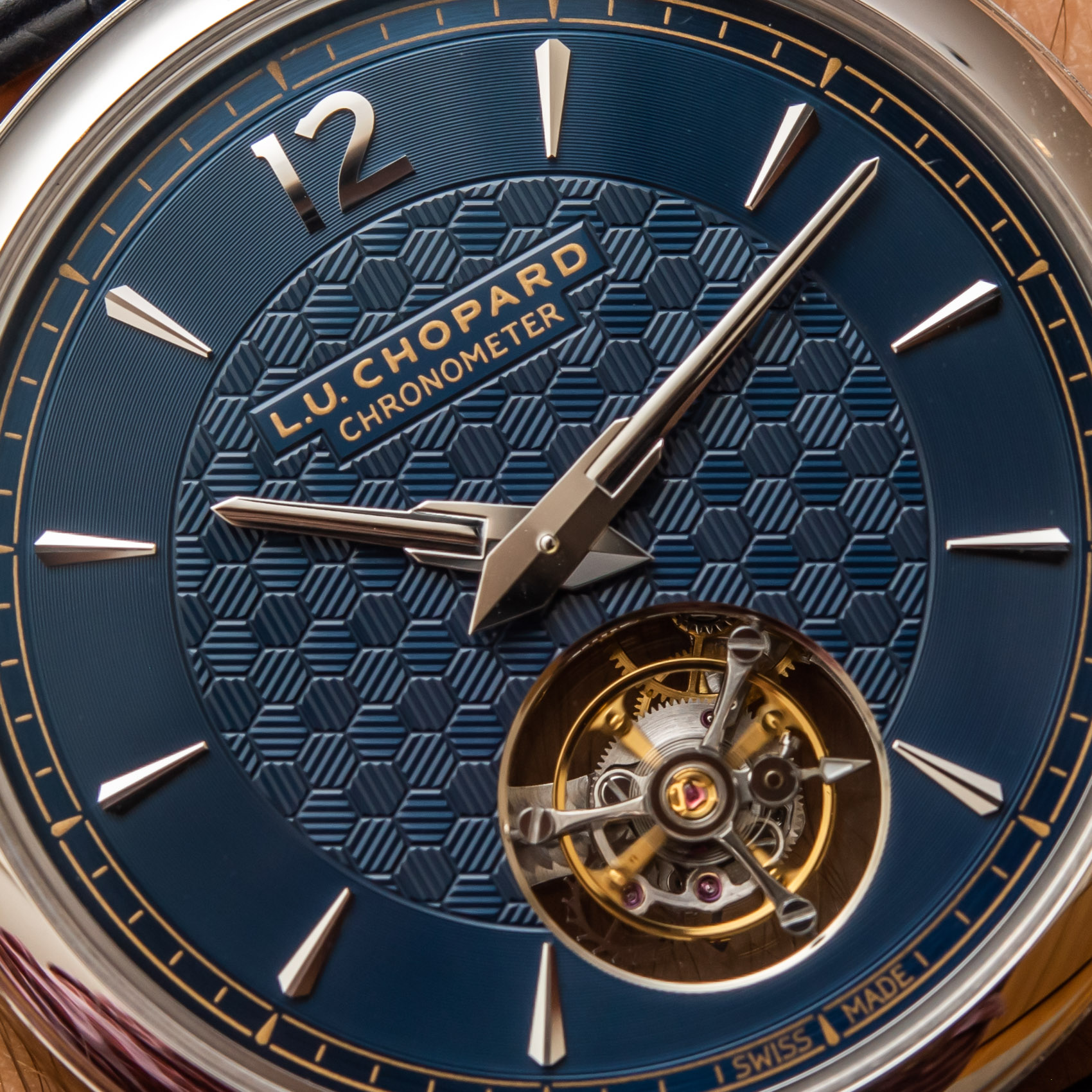
While the tourbillon and movement will initially garner the most attention, the dial warrants praise of its own. Since its inception, Chopard L.U.C has been making dials out of solid gold for select pieces by partnering with Metalem, who is among the top dial makers out there (they make Philippe Dufour’s dials). The dial for this Flying T Twin is done in a solid gold that is galvanized in order to achieve the blue color. Sadly, much of the guilloché we see done nowadays is stamped by a machine, which is certainly not the case here.
The dial of this L.U.C (like many before it) is done using guillochage, AKA hand-done engine turning. The intricate, non-uniform honeycomb pattern here is drop-dead gorgeous, as is the very finely done circular pattern around the dial’s exterior circumference.
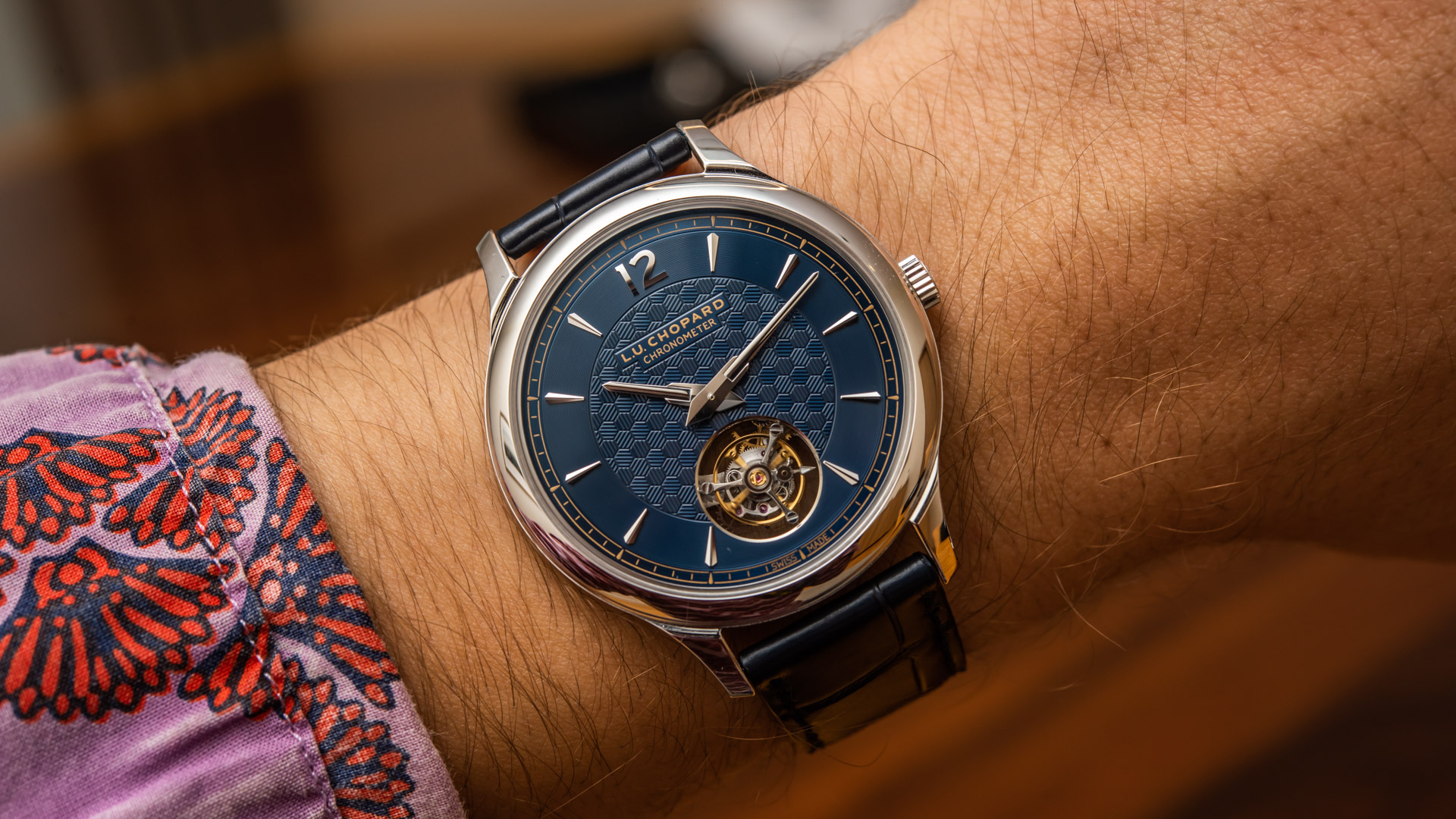
Done in “Fairmined” 18k white gold, the case of the Flying T Twin measures 40mm-wide and 7.7mm-thick and has 30m of water resistance. Where the first model in 2019 came in a rose-gold case with a gray ruthenium galvanized gold dial, this new iteration opts for white gold with the aforementioned blue galvanized gold dial. Chopard uses “100% ethical gold,” which is a legitimate and admirable move toward sustainability and human rights.
The Chopard L.U.C Flying T Twin is an impressive piece of horology from a brand that has earned its place alongside the older names. Limited to 50 pieces, price is upon request, but I imagine it is somewhere in line with the $118,500 price of the original, which is considerable but not at all egregious in relation to the competition. You can learn more at chopard.com.
